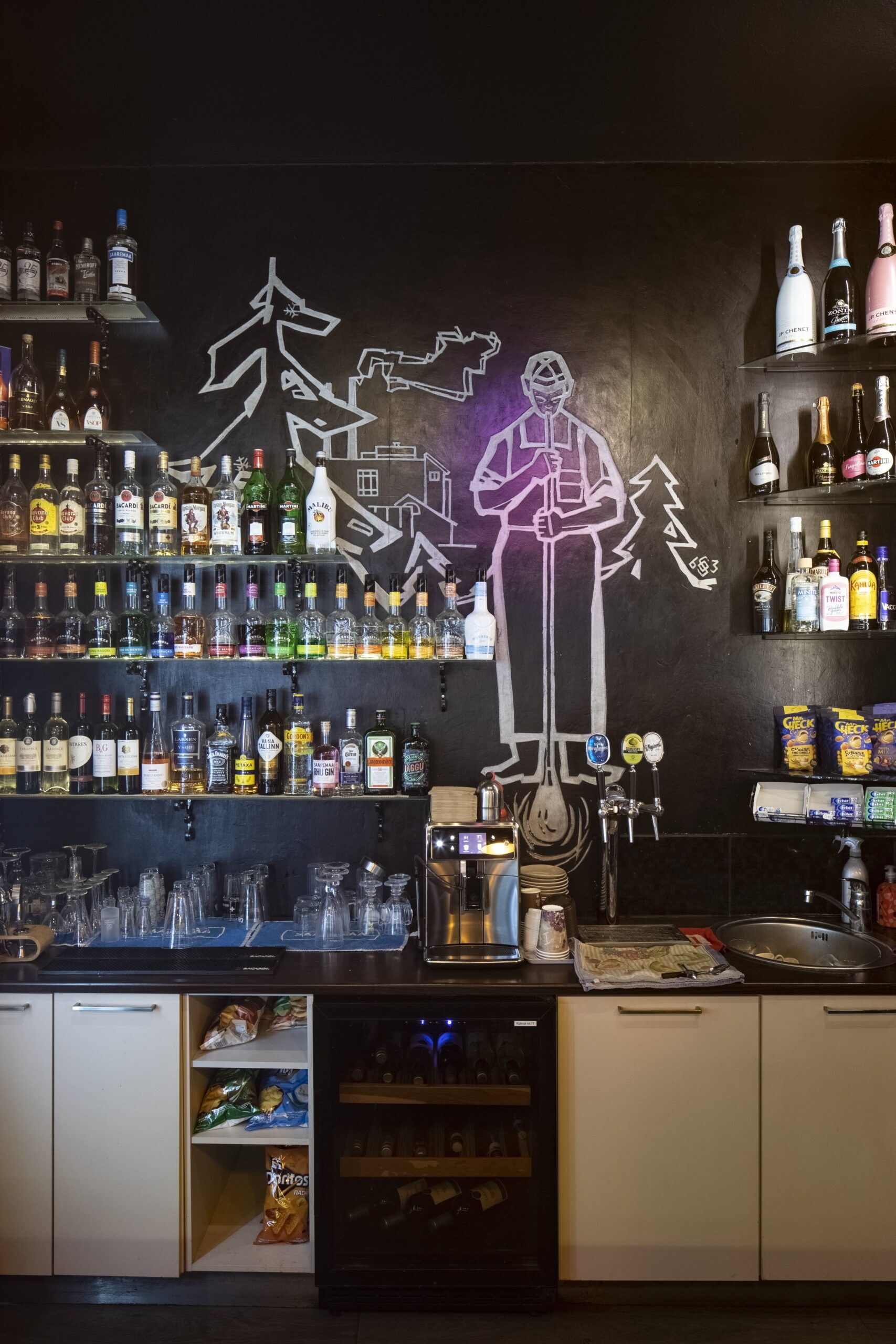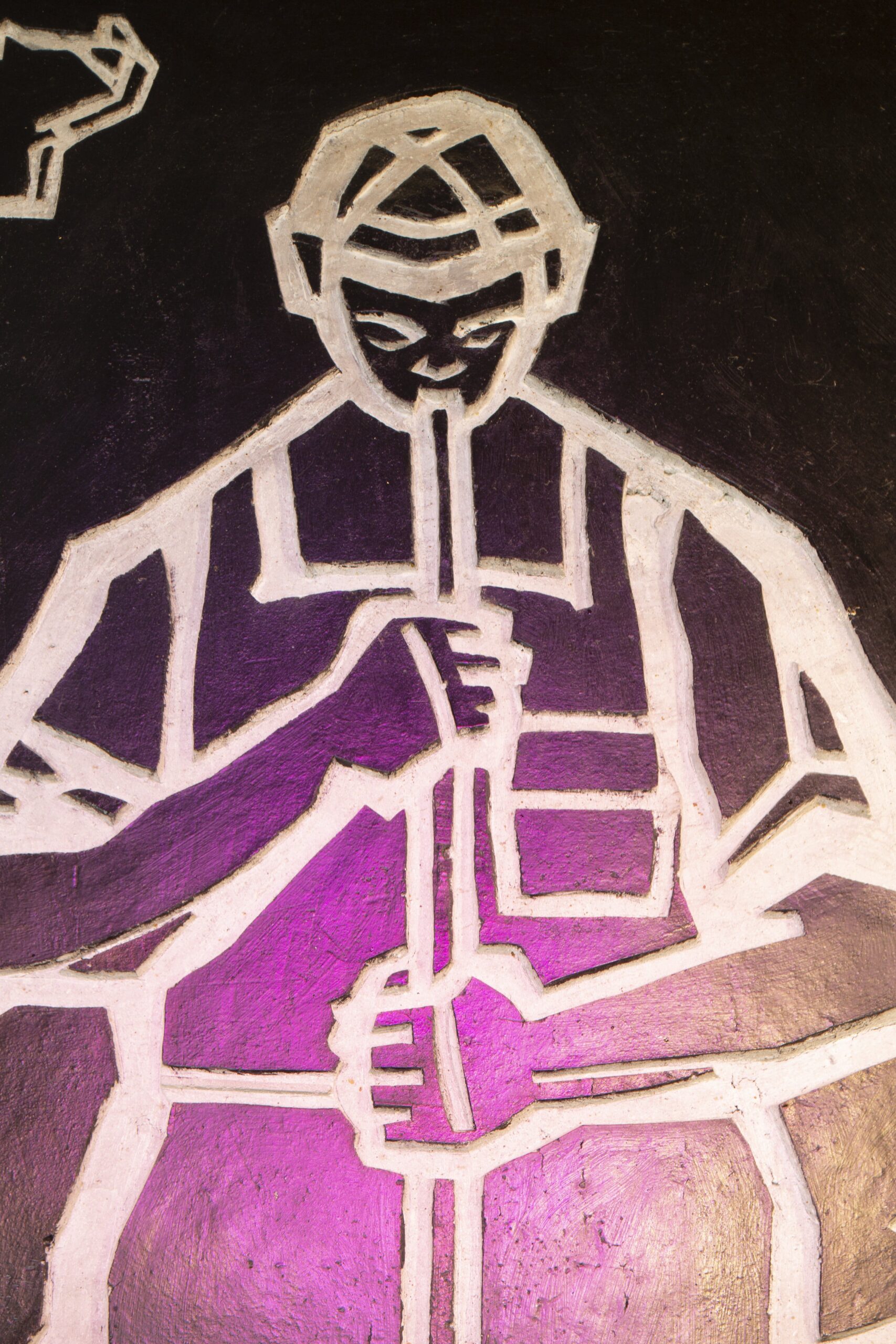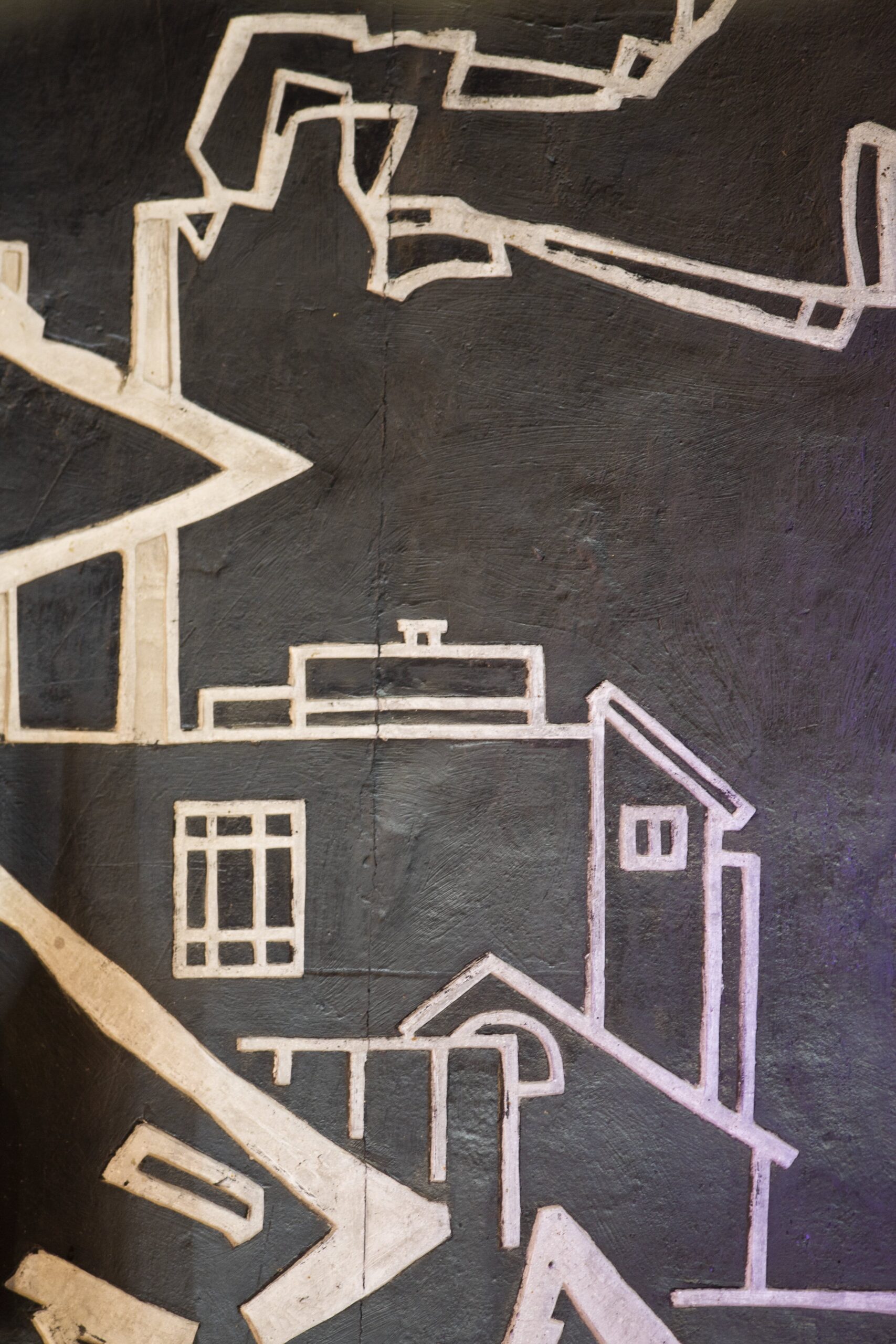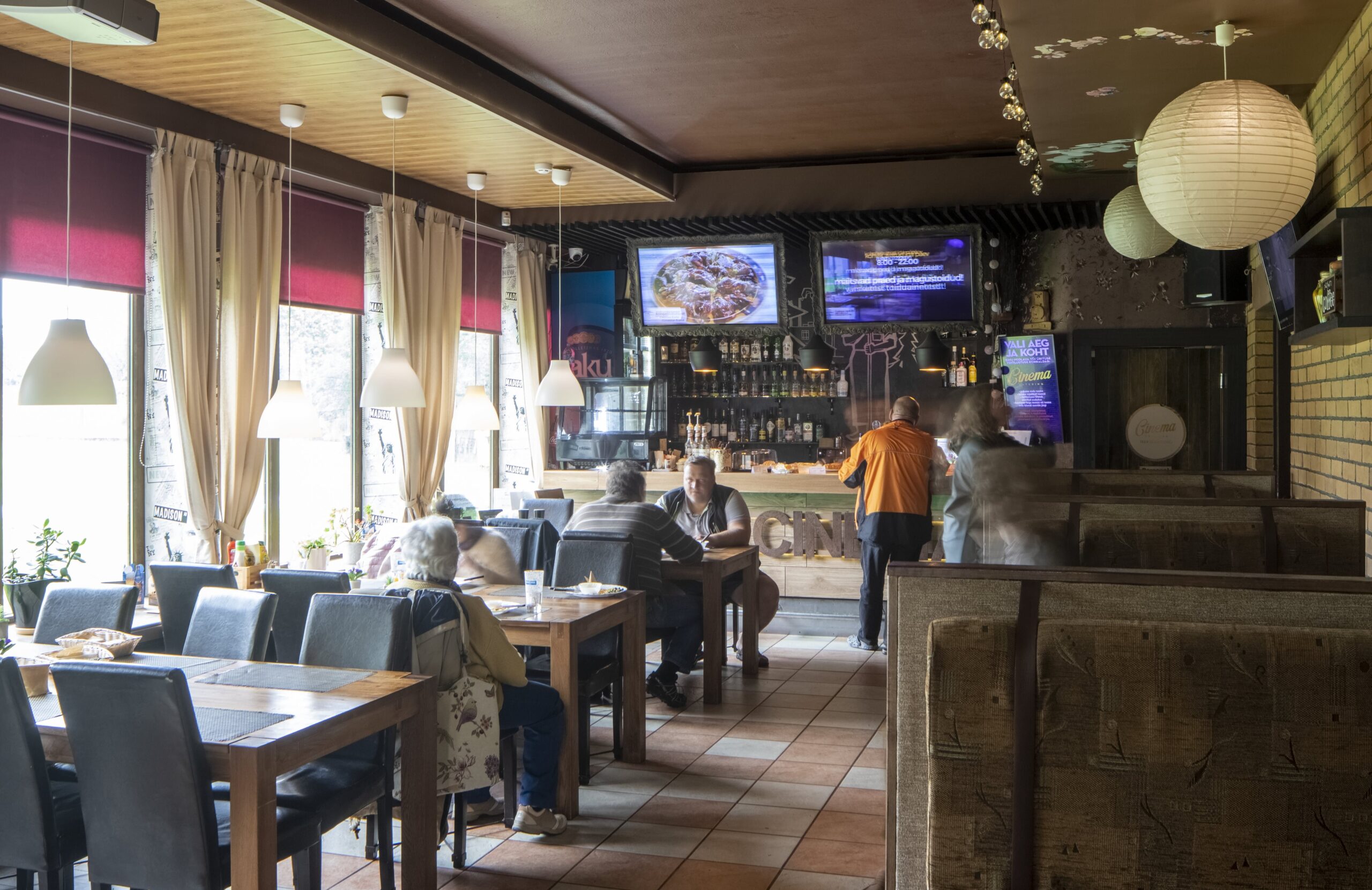Sgraffito Klaasipuhuja (“Glassblower”) at Järvakandi Cinema
Year of completion: 1963
Address: Rapla County, Järvakandi, Tallinna mnt 21
Design author Olev Soans
Sgraffito
Not under conservation as a cultural monument
In 1879, glass artist Johan Runge signed an agreement with Järvakandi estate owner Otto von Taube, according to which he was authorised to found a glass factory onto the manor’s property and operate there for 20 years. Runge received free timber for constructing the factory, but had to annually purchase firewood from the manor to keep the factory running, as agreed in the contract. In addition, Runge had to turn the whole factory over to the manor after the contract’s termination. Considering the massive amount of firewood necessary for glass manufacturing at the time, and the income that a glass factory could generate in twenty years, the estate owner had signed quite a profitable deal. Unknowingly, he created the foundation for the borough of Järvakandi and its glass tradition with the act – a workers’ settlement soon developed around the glass factory that was built approximately 12 kilometres from the heart of the manor, and it was named Järvakandi.
At first, the glass factory focused on creating jars meant for salting fish, later on the production of bottles and window glasses began. The Järvakandi glass factory continued production during the early Estonian Republic, surviving the recession of the 1930s, the nationalisation of 1940, and the frantic 1990s, establishing Järvakandi as a known glass-settlement. It is therefore entirely natural that upon receiving the proposition to create an artwork for the freshly constructed Järvakandi cinema building Edu (Success) in 1963, the graphic artist Olev Soans chose a glass blower as the mural’s motif. Soans had already met architect Karl Lüüs, designer of the cinema building, in the late 1940s, earning a living as a drawing teacher in Järvakandi. Principal of Järvakandi School Aet-Triin Vasnu has researched the local art legacy of Olev Soans. She writes in the Kehtna parish paper Valla Vaatleja (“Parish Observer”) that Soans, being a professor in the Estonian Academy of Arts, involved his students Jüri Arrak and Tõnu Lauk in the creation process of the Klaasipuhuja (“Glassblower”) by asking them “Boys, do you want to earn some money?” Naturally, the boys did. Klaasipuhuja is a fairly quintessential sgraffito – two layers of plaster were applied to the wall, and the students cut the shape of the glassblower from Soans’s design into the darker surface layer, rendering it visible on the bright lower layer.
Rapla County’s first widescreen cinema Edu is in active use today as a club named Club Cinema. Olev Soans’s Klaasipuhuja is preserved and valued, and the motif has been implemented on the glass trophy for Järvakandi Honorary Citizens, as well as in the lobby of Järvakandi School.
Anu Soojärv











